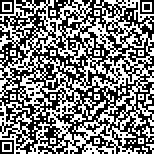下载中心
优秀审稿专家
优秀论文
相关链接
摘要

京津冀及周边地区是中国PM2.5污染最重的区域之一,利用卫星遥感技术监测大范围的PM2.5时空分布变化是一种先进的重要手段。本研究首先基于暗像元算法利用FY-3B/MERSI与AQUA/MODIS对京津冀及周边区域进行了遥感AOT反演和验证分析;然后,引入气象资料和地面观测资料利用GWR模型反演了区域PM2.5浓度,并对遥感反演结果进行了交叉验证评估,综合对比分析了MERSI和MODIS的气溶胶及PM2.5遥感监测能力;最后,利用MERSI数据对2017年第一季度京津冀及周边区域的PM2.5月均浓度时空分布变化情况进行了初步探索分析。结果表明:FY-3B/MERSI在气溶胶及PM2.5遥感监测能力方面略优于AQUA/MODIS,MERSI反演的1 km分辨率AOT和PM2.5与地面站点实测结果的决定系数R2分别为0.76 μg/m3和0.79 μg/m3,均方根误差分别为0.26 μg/m3和28 μg/m3,平均绝对误差分别为0.16 μg/m3和15 μg/m3,能基本满足对京津冀及周边区域PM2.5的精细化监测需要。2017年第一季度京津冀及周边区域PM2.5月均浓度遥感监测结果表明该区域的PM2.5空间分布格局与地形地貌关系密切,高值区整体上沿太行山脉成带成片;从时间变化来看,1-3月呈逐月下降的趋势,其中3月份PM2.5区域浓度较1月和2月有大幅下降。这说明FY-3\MERSI遥感反演产品能为环境质量监测和环境管理工作效果评估提供有效参考,本研究对国产卫星在大气环境遥感业务中的大力发展应用有重要参考意义。
关键词:
京津冀及周边 FY-3B/MERSI AOT PM2.5 卫星遥感Beijing-Tianjin-Hebei and its surrounding areas are some of the most PM2.5-polluted regions in China. Satellite remote sensing technology is an advanced and important means for monitoring the change in spatio-temporal distribution of large-range PM2.5.
In this study, we conduct AOT retrieval and validation analysis based on the Dark Target (DT) Method by utilizing FY-3B/MERSI and AQUA/MODIS satellite data in this region. The weather and ground observation data are brought in to retrieve the regional PM2.5 concentration using the GWR model, and cross-verification assessment for remote sensing and retrieval results is conducted. Through comprehensive comparison, this study analyzes the capability of MERSI and MODIS in monitoring aerosol and PM2.5. Finally, a preliminary exploration analysis on the monthly temporal and spatial changing status of PM2.5 concentration is conducted in the first quarter of 2017 in Beijing-Tianjin-Hebei and its surrounding areas by utilizing MERSI data.
Results show that the remote sensing monitoring capability of FY-3B/MERSI is slightly better than that of AQUA/MODIS. The R2 between AOT and PM2.5 dataset with a resolution of 1 km retrieved from MERSI and that from the ground station observation results are 0.76 and 0.79, respectively. The root-mean-square errors are 0.26 and 28 μg/m3, respectively, while the mean absolute errors are 0.16 and 15 μg/m3, respectively. The results can basically meet the demand of fine PM2.5 monitoring in Beijing-Tianjin-Hebei and its surrounding areas.
The remote sensing monitoring results of monthly PM2.5 concentration in the first quarter of 2017 in Beijing-Tianjin-Hebei and its surrounding areas show that the spatial pattern of PM2.5 is closely related to the terrain and landscape, with the high concentration zone mainly lying along the Taihang mountains in flakes. From the view of temporal change, a decreasing trend is noted, with March seeing a plunge in concentration value compared with the first two months.
The findings suggest that FY-3B/MERSI remote sensing retrieval results can provide effective reference for environmental quality monitoring and environmental management effectiveness evaluation. This study is significant for the development of domestic satellite application in atmospheric environmental remote sensing sector.

